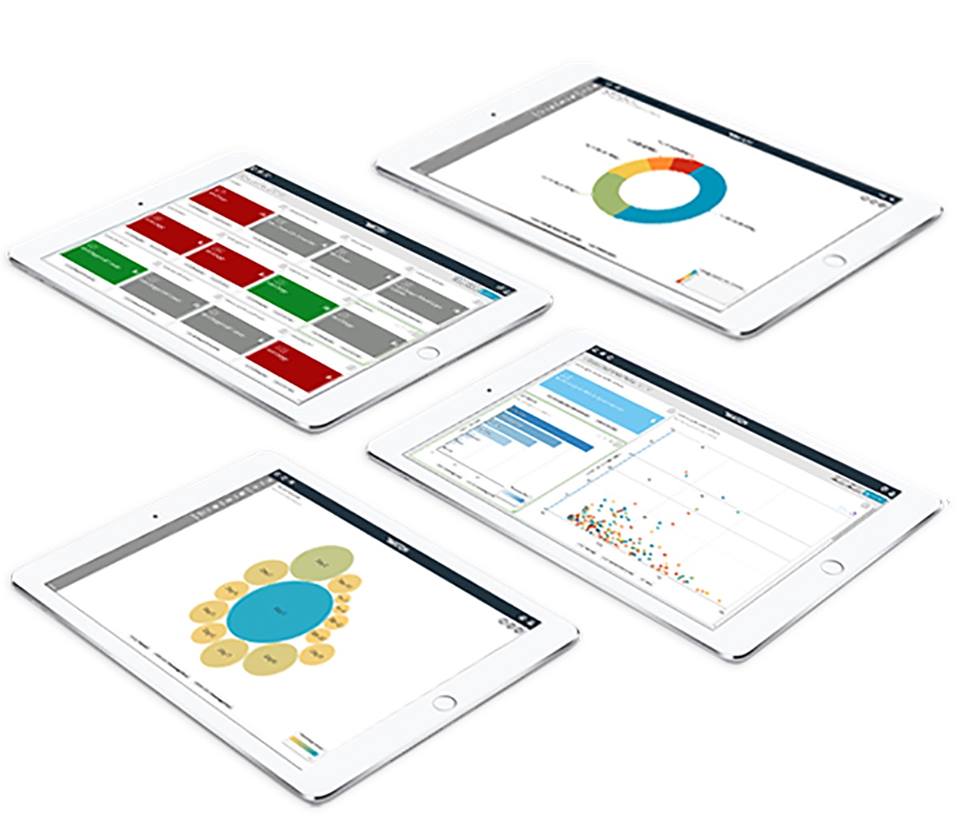The foreboding begins long before the call is made. Dialing the customer service is often people’s last resort and rarely a pleasant experience. At best, you’re attended to after a few beeps and briefly holding the line, and at worst, you can lose hours, as the call gets bounced from official to official, till everyone at the organisation knows your ordeal, entirely from scratch. It’s a punishment, really.
Isn’t there an idea for a startup lurking somewhere? Denver-based ClickFox which recently raised $38 million led by Arrowroot Capital to reach a valuation of $82.9 million, wants to ensure that you don’t have a sour customer service experience.
It claims to have analyzed consumer behavior for more than 400 million consumer accounts across numerous channels. It provides visually intuitive mapping of all customer interactions – from IVR, retail, web, email, to agent CRM desktops, handheld devices, and interactive kiosks. And it tracks a customer’s journey – from log in to log out, across channels and utilizes user-friendly analytics to provide the company the dataset.
For example, when energy supplier, Georgia Power (GP) was inundated with high customer calls during the summer season, they approached ClickFox. They wanted to analyse the connection between bills with high balances and the high calls to their call center.
The analysis was difficult, deep, and robust as it would involve comprehensive data collection from many channels. Analysts would have to identify bill fluctuation season, customer population, average bill amount as well as the value of a high bill.
ClickFox utilised its journey analytics software to help GP reduce internal operating costs and improve customer satisfaction.
The startup bucketed customers into mutually exclusive groups according to the deviation from average bill and inferred that GP experiences an average caller rate of 72% for customers with a bill ‘3.0 deviations’ (base 25%) higher than average.
ClickFox concluded that “influencing just 30% of the high bill customers has a potential of reducing over 40,000 calls from the contact center during peak season.” GP now educates customers on peak usage periods and recommends enrolling in billing programs that reduce the impact of seasonal bill increases.

CEO, Marco Pacelli
In the late-90s, Marco Pacelli, the CEO of ClickFox, was already a couple of startups old, and had experience in sales and channel organization. In 2000, he came across researchers from Georgia Tech who had put together sophisticated algorithms to understand consumer behaviour. They placed consumer experiences into a path to allow interactions “within channels, human to human, machine to human and machine to machine.” Pacelli recalls how he visualized converting their concept into a product to address a problem he had been hearing for many years. “People”, he says, “wanted to be able to capture customer experience, start to finish”, and understand how it affected their business.
Today, ClickFox claims to have found the “missing link in the 360-view of the entire customer chain”. It is the customer’s journey and not a random collection of data. While ClickFox hasn’t disclosed its revenue, but is well funded, and claims to have saved its clients over $1 billion.
ClickFox raised its first Series A funding of $4 million is 2004 followed by Series B and Series C of $12.5 million in 20018 and $ 17.9 million in 2010. The investors have been the likes of Cedar Fund and Morgan Stanley Alternative Investment Partners.
More Than A Click
ClickFox is not a superior customer service center but a company that recognizes and looks beyond just support or customer care. A consumer interaction with the organisation – called a touchpoint – can be more than just with its website. It can be when the marketing strategies are directed at them for sign ups or when the customer seeks solutions. The interaction happens through various channels and it requires companies to analyze the data thoughtfully, instead of mindlessly letting it pile up. In a way, ClickFox contextualises this information to help the company understand it better.
It calls this ‘journey analytics’.

ClickFox’s visual analytics technology (PC: ClickFox)
When most companies add a customer care department and forget about it, ClickFox goes further to exhibit the department’s redundancy. Customer-facing staff may not understand the customer’s history and may not be able to offer quick, immediate solutions. While data is not an all-in-one panacea, ClickFox’s pitch is for companies to use its journey analytics to improve customer relationships. But ClickFox is not the only one. Several other companies such as Verint, Salesforce, Adobe Campaigns, among others are also offering journey analytics software that has helped reshape the industry.
Mapping Customer Journeys
According to Pacelli, “(Journey analytics) takes unstructured data and creates a behavioural blueprint of everything you did when you called your bank and went through either a voice prompt or a touchtone prompt, step by step.” While this obviously means that you’re watched like a hawk, ClickFox claims to use this information to provide you with better service.
In each product that ClickFox runs, like Fox which ingests data and performs advanced analytics or Trace which identifies improvement opportunities; visualisation of a customer’s journey from the beginning to now is the most important tool. The tools also allow analysts to dig deep in a given metric.
For example, if they know that you do a task regularly, as in the case of other startups that track behaviour and usage, they will “start creating predictability behavior patterns” and try to be proactive. This also means predicting when and how you’re going to face an issue and eliminating that frightening customer service call.
Journey analytics can help identify what annoys customers. In a blog, ClickFox’s Chief Analytics Officer, Robert Bagley notes the case of a bank where its journey analysts realized the following: “When a customer is facing bill payment challenges – failed payments on the web, for example – an ad for a new card triggered negative reactions and often resulted in the customer closing their account entirely.”
Bagley concluded with what can be considered ClickFox’s biggest USP: Mapping concurrent journeys, not just focusing on marketing or sales, could have prevented the loss of business.
Subscribe to our newsletter



